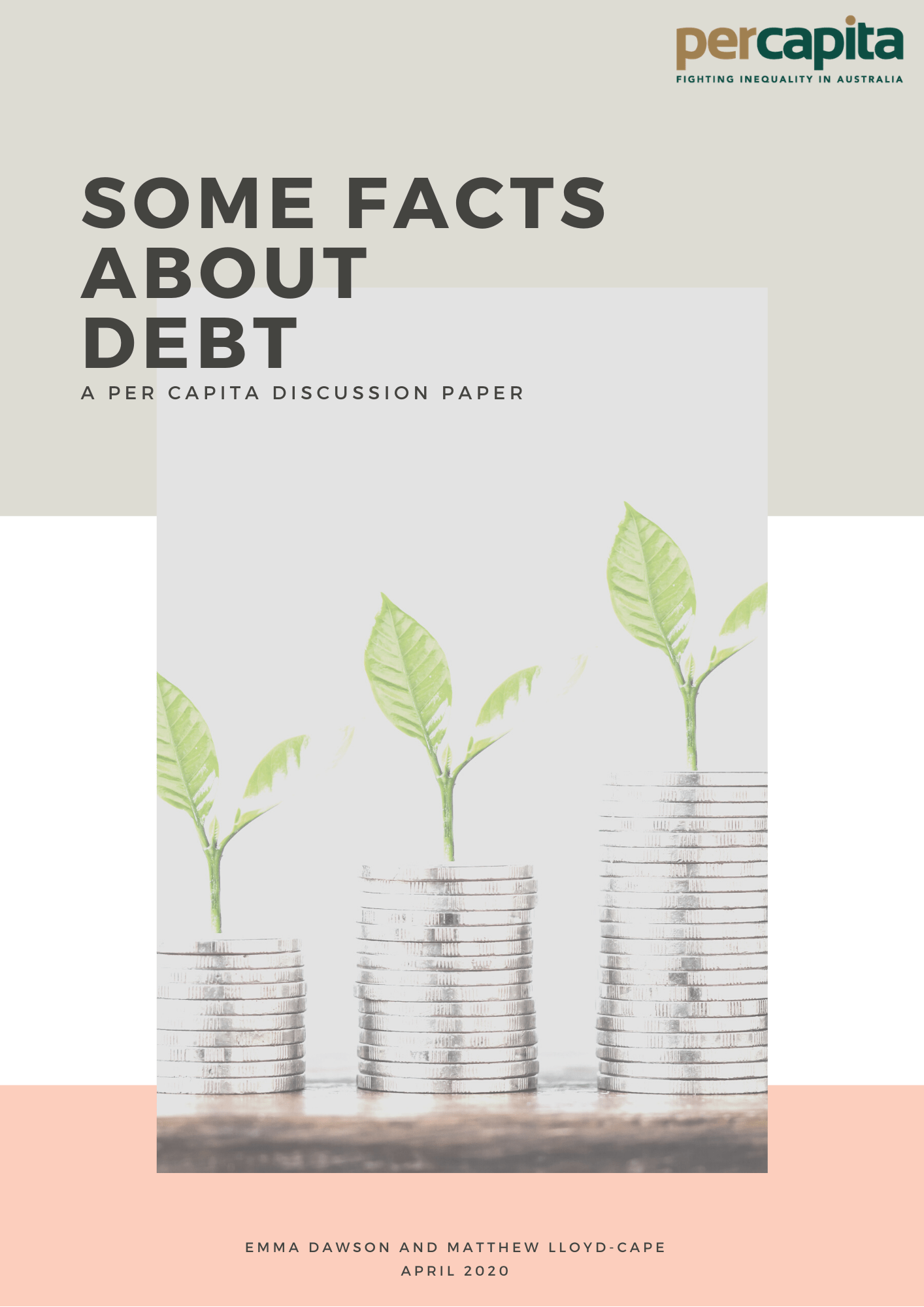Introduction
As the federal government pumps unprecedented amounts of spending into the Australian economy to offset the damage from the worst economic shock in living memory, talk is starting to turn to the fear of the long-term debt this will create.
This fear is largely misplaced, and results from decades of a deceitful narrative that the federal budget is like a household budget. If we borrow, we must pay it back, within as short a time frame as possible, or our children will be paying higher taxes for generations – or so the story goes.
The story is fiction. Public debt is not like household debt.
When someone takes out a mortgage to buy a home, they borrow against the value of that home – the property is the asset against which the loan is secured. The value of that asset increases over time, and income rises along with inflation, so that eventually, even with interest incurred, the homeowner is able to pay off the debt within their means, and ends up with an asset that has greater value than it did at the start. The term of the loan is set so that the borrower can pay the loan off during their working life, while they maintain income sufficient to service the debt.
When the federal government borrows, it also does so against an asset, which is the productive capacity of Australia – the nation’s natural and human resources. Unlike a household mortgage, though, there is no time limit on the repayment of the loan, because the productive capacity of the nation has no finite life-span: Australia will never “retire”, it will continue to generate income through productive economic activity.
Therefore, unlike a household, the federal government can roll its debt over indefinitely, provided the nation’s economic activity continues and Australia’s productive capacity operates to its full potential. And, as the nation’s economy grows, the size of the debt in proportion to national wealth, measured as Gross Domestic Product (GDP), shrinks commensurately.
The national economy is not an end in itself; it is a means by which to exchange goods and services, and distribute prosperity to ensure the wellbeing of a nation’s people. While excessive public spending is problematic when economic activity is strong, the reverse is true during times of economic constraint.
As we begin to emerge from this health and economic emergency, there is likely to be a fierce battle waged over how we restore economic activity and recover from the massive loss of jobs and income.
On one side will be a push to return to the kind of economic activity that has exacerbated wealth and income inequality, and led to the crisis of anthropogenic climate change that threatens to end life as we know it. It will likely involve cuts to government spending on essential services and income support, the selling off of public assets, and increasing taxation, most probably by increasing the rate of the GST.
On the other is an opportunity to reset society to be more sustainable, equitable and enjoyable for all of us, and to pay down the debt we have taken on to protect jobs and livelihoods through this crisis without causing further damage to Australians through the imposition of austere cuts to services and incomes.
It is critical that the decisions taken in the months ahead are based on facts. What follows are some facts about debt that address the myths that have been circulated, for far too long, about the nature of our economy and its capacity to support a high standard of living for every Australian.

